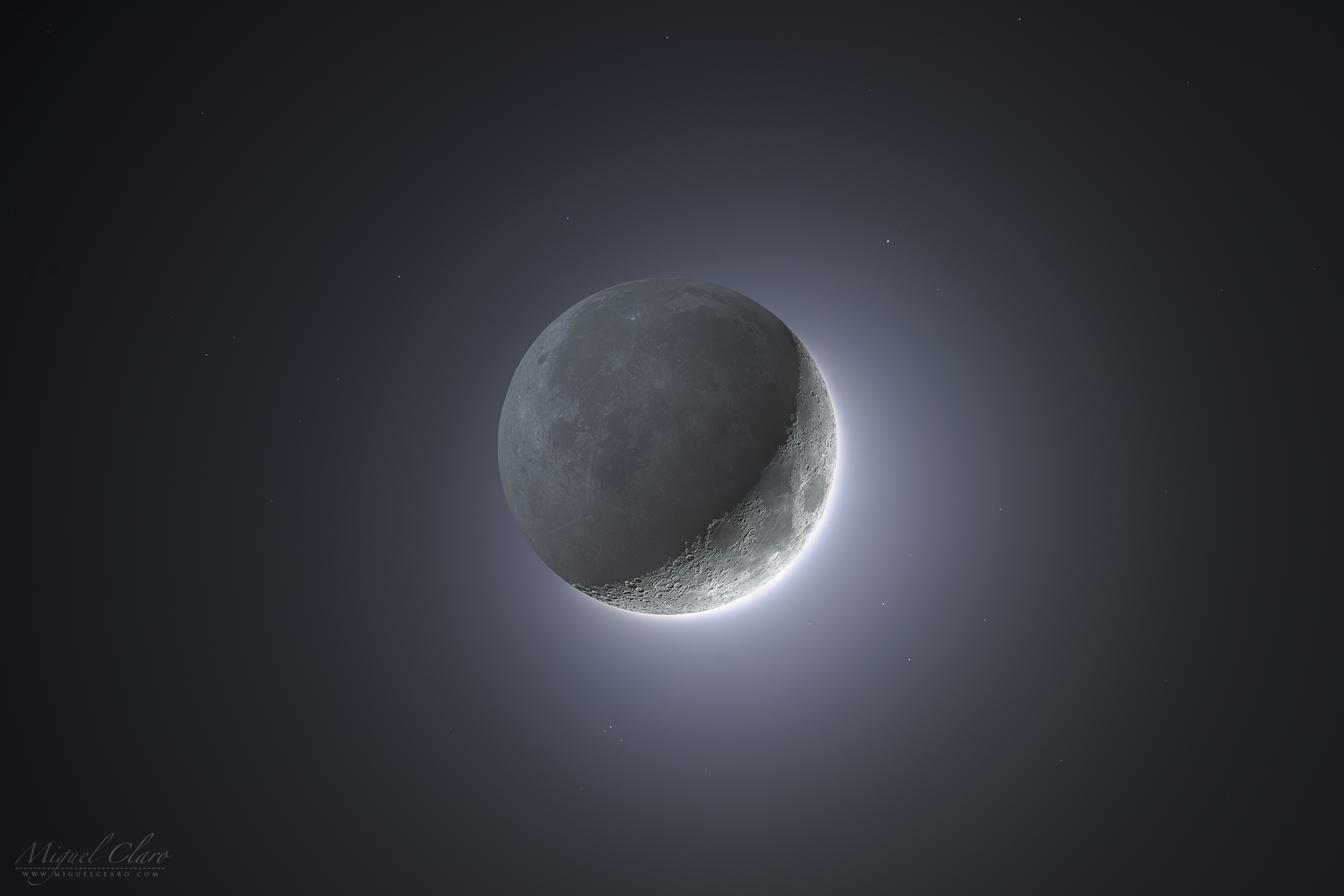
Posted on 08/24/2020 5:10:37 PM PDT by MtnClimber
Explanation: How come the crescent Moon doesn't look like this? For one reason, because your eyes can't simultaneously discern bright and dark regions like this. Called earthshine or the da Vinci glow, the unlit part of a crescent Moon is visible but usually hard to see because it is much dimmer than the sunlit arc. In our digital age, however, the differences in brightness can be artificially reduced. The featured image is actually a digital composite of 15 short exposures of the bright crescent, and 14 longer exposures of the dim remainder. The origin of the da Vinci glow, as explained by Leonardo da Vinci about 510 years ago, is sunlight reflected first by the Earth to the Moon, and then back from the Moon to the Earth.

Pinging the APOD list.
The old moon in the new moon’s arms.
I’m going to have to go to this Vinci place someday. Really smart folks seem to come from there.
But it’s in Tuscany and I hear there’s no place to stay.

I know a guy who you can talk to...
So, I was just outside looking at the moon. Looks more like a half moon tonight. EDT.
If the moon is in front of us, relative to the sun, why isn’t curve rounder given that the earth is spherical?
What is the name of this moon?
: )
This is not an eclipse where the earth’s shadow is cast upon the moon... it is just a crescent moon where the shape of the earth is completely irrelevant. None of the shade on the moon is cast by Earth, it’s just the part of the moon that the sun isn’t shining on at the moment. Hold up a tennis ball to a lamp... it’ll look the same when viewed from the same angle as we see the moon.
The only things interacting in the scene are sunlight and the moon. The moon would have a shady side whether the Earth is present or not.
The Earth is just providing a bit of indirect reflected light from Earth’s sunny side to what would otherwise be a starkly dark shadowed side of the moon if there was but a single light source.
Kind of like when good artists paint horses, and show a bit of light on the underbellies- this is the light that is reflected from sunlit ground or grass back up to the belly. It’s not enough to just paint the light that hits a subject from one source- an artist has to consider that light also bounces from other elements of a scene, and when it does, it often adds a hint of the color of the object it bounced off of before. If the horse is standing on green grass the reflected light will have a hint of green. If the horse is standing on exposed soil, such as iron-rich red earth, the light that bounces up onto the belly will have a bit of that oxide orange-red to it.
Yes, but I can see that, too.
So, it doesn’t really answer my question.
But thanks for the reply.
The dark area is the area not illuminated by the sun. In the half moon photo we are seeing the moon from 90 degrees off from the center of the illuminated side so it looks like a straight. The dark side is not from the Earth’s shadow. That happens in a lunar eclipse.
Disclaimer: Opinions posted on Free Republic are those of the individual posters and do not necessarily represent the opinion of Free Republic or its management. All materials posted herein are protected by copyright law and the exemption for fair use of copyrighted works.